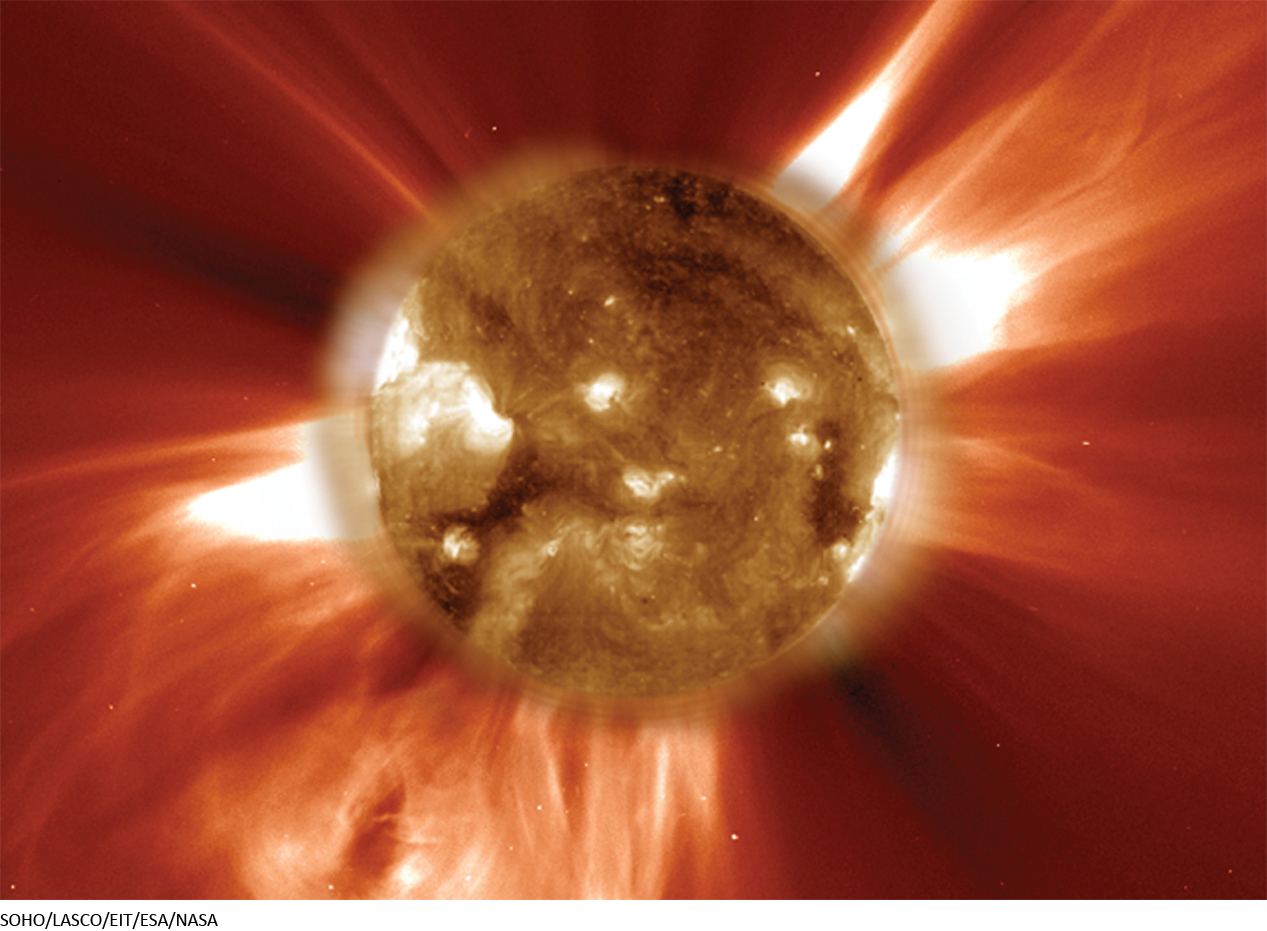205

Probing the Dynamic Sun
CHAPTER LEARNING OBJECTIVES
By reading the sections of this chapter, you will learn:
- 9-1 The Sun’s energy is generated by thermonuclear reactions in its core
- 9-2 Energy slowly moves outward from the solar interior through several processes
- 9-3 The Sun’s outer layers are the photosphere, chromosphere, and corona
- 9-4 Sunspots are low-temperature regions in the photosphere
- 9-5 The Sun’s magnetic field also produces other forms of solar activity and causes aurorae on Earth
206
Our Sun is by far the brightest object in the sky. But, the Sun is far more than just an object that illuminates the daytime. Even before the advent of written history, the ancients knew the important role the brilliantly shining Sun has in making plants grow and energizing winds that change the weather. What they did not know was why the Sun shines or how its immense energy impacts Earth in unexpected ways. By earthly standards, the temperature of its glowing surface is remarkably high, reaching thousands of degrees. Yet there are regions of the Sun that reach far higher temperatures of tens of thousands or even millions of degrees. Gases at such temperatures emit high-energy ultraviolet light, which makes their intricate patterns appear prominent with an ultraviolet telescope in space, as shown in the chapter opening image. Some of the hottest and most energetic regions on the Sun spawn immense disturbances that ripple through space. These can eject material from the Sun far enough to reach Earth and other planets.
Stars like the Sun shine intensely by converting hydrogen atoms into slightly larger helium atoms releasing tremendous amounts of energy in the process.
Just in the past century, by looking carefully at the details of how energy is emitted by the Sun, we have finally learned that the Sun, and in fact most stars, shines because hundreds of millions of tons of hydrogen are squeezed together and converted to helium every second at its core. We have also recently come to understand that the Sun has a surprisingly violent but nearly invisible atmosphere of its own, with a host of dynamic features such as sunspots whose numbers rise and fall on a predictable 11-year cycle. By studying the Sun’s vibrations, we have begun to understand new details of the Sun’s character far beneath its previously unexplored surface. And, perhaps most important, we are in the beginning phases of investigating how changes in the Sun’s activity can affect Earth’s fragile environment as well as threaten our technological society. If we can uncover the energetic processes at work inside our closest star, then we can better understand the distant stars far beyond our solar system that dot the night sky.